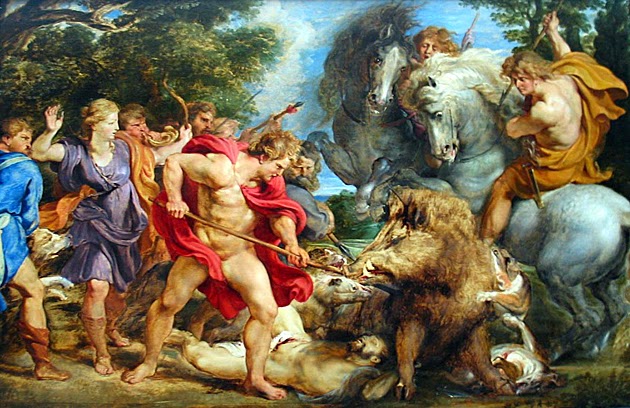If you want to know where the future of AI is heading, look no further than the past, for the latest developments in AI can be found ubiquitously in the world of mythology.
Sensing People Through Solid Objects
Today, MIT News reported on a project that uses AI to “sense” people through walls. While the idea of X-ray vision is most popular in comic books and scifi movies, these genres and media, too, have their roots in mythology.
While MIT’s Computer Science and Artificial Intelligence Laboratory (CSAIL) latest project, “RF-Pose,” uses artificial intelligence (AI) to teach wireless devices to sense people’s postures and movement, even from the other side of a wall, the concept of detecting what lies behind the veil penetrates deep into antiquity.
In Greek legend Lynceus was a king of Argos who had extraordinary vision. According to some versions of the myth, keen-sighted Lynceus, who joined the Calydonian Hunt and the Argonautic expedition, could easily direct his sight beneath the earth, and he could even detect his cousin and foe, Castor, who had hidden in the hollow of an oak tree.
If you read the myth, it doesn’t bode well for Lynceus, who is slain by his cousin Pollux shortly thereafter.
Apart from seeing or sensing people through solid objects, AI also parallels mythology in many other ways.
Holograms in AI and Legend
Another area that Artificial Intelligence is being implemented in is in holograms. The prestigious Science journal also came out with an article on AI today, this time showing how an algorithm can one day be used to project events like the World Cup in a 3D hologram.
Using “a convolutional neural network—a type of artificial intelligence algorithm loosely modeled on the part of the brain that processes visual data,” the AI “accurately predicted depth maps for each player and combined them with the color footage to reconstruct each player in 3D. The players were then superimposed on a virtual soccer pitch allowing the match to be viewed in any 3D content viewer from a variety of angles.”
One of the most fascinating aspects of holograms is that every fraction contains the whole. That is – you can take apart the image and reduce it down to its tiniest component, and the entire image will still be encoded in that bit.
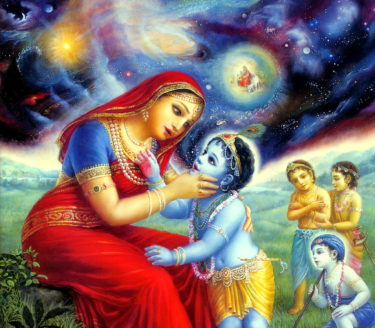
Lord Krishna opens his mouth and the entire universe is brought forth.
The idea of the whole being represented in every smaller fractal is a concept that goes back thousands of years. In the Hindu texts, when Lord Krishna opened his mouth, his mother looked inside, and to her astonishment, she saw the entire universe within.
Read More: New evidence for Holographic Universe backs up ancient esoteric teachings
She saw the sun, the moon, planets, mountains, and she even saw herself with Krishna drinking milk on her lap.
The universe was inside of Krishna and Krishna was part of the universe, which also describes holographic principles.
And according to Sir Charles Eliot’s interpretation of the Hindu Sutra, “In the heaven of Indra there is said to be a network of pearls so arranged that if you look at one you see all the others reflected in it.” More evidence of holographic principles in the ancient past.
AI and Creation Myths
We’ve seen AI prototypes that can “sense” people through walls and algorithms that can construct holographic models of reality. Now let’s take a look at some more prototypes from mythology.
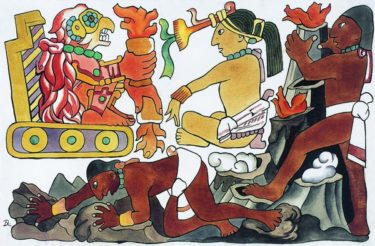
Mayan creation myth
Take the Mayan creation myth from the Popol Vuh, for example.
According to the Popol Vuh, and many other creation myths from around the world, humans were artificially created out of raw materials such as corn, clay, or mud.
Read More: The Story Of Artificial Intelligence As Told By The Ancient Mayan Popol Vuh
Just how developers today create AI to help ease the burden of humans, so too did the gods of old create humans to lighten their load and toil the earth.
At first the gods made simple prototypes out of earth and wood. Like simple programs they were — efficient at small tasks but not able to perform complex operations.
“But there was nothing in their hearts and nothing in their minds, no memory of their mason and builder.”
Without soul, memory, or intelligence, these first prototypes were like today’s chatbots or simple machine learning algorithms — basic and with limited abilities.
“And so they fell, just an experiment and just a cutout for humankind,” until a newer, more compatible version could be achieved.
Hybrids in AI and Mythology
At the World Government Summit in 2017, Elon Musk iterated that Artificial Intelligence is progressing so rapidly that humans will have to merge with digital intelligence to become a sort of AI-human hybrid.
Read More: AI-human hybrids are essential for humanity’s evolution and survival: Elon Musk
“Over time we will probably see a closer merger of biological intelligence and digital intelligence,” Musk explained at the time.
The entrepreneur’s persistance on this issue led him to create Neuralink, a company that will work towards integrating the human brain with AI that would circulate through the veins and arteries using a “neural lace” interface.
Read More: AI human cyborgs are next on Elon Musk’s agenda with the launch of Neuralink
According to Gizmodo, a neural lace is “a mesh that grows with your brain, it’s essentially a wireless brain-computer interface. But it’s also a way to program your neurons to release certain chemicals with a thought.”
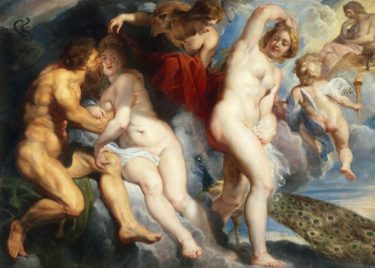
Ixion and Nephele
But the idea of hybrids, especially human ones, also pre-dates AI by millennia.
Once upon a time the Greek God Zeus suspected his friend of having the hots for his wife Hera, so Zeus tested him by creating an artificial version of Hera from a cloud and named her Nephele.
Read More: How Tragic Duality in Mythology can Parallel Binary Output in Artificial Intelligence
Zeus’s unsuspecting friend, King Ixion, saw the doppelganger Nephele naked the next morning, and thinking that she was Hera, immediately took her and bore two children.
The children, born of a human and artificially created cloud nymph, became the first hybrid race of what are now known in mythology as centaurs.
Centaurs gained a reputation for being wild and morally depraved.
AI’s Future Past
If you want to gain a sense of where the future of Artificial Intelligence lies, keep looking to mythology.
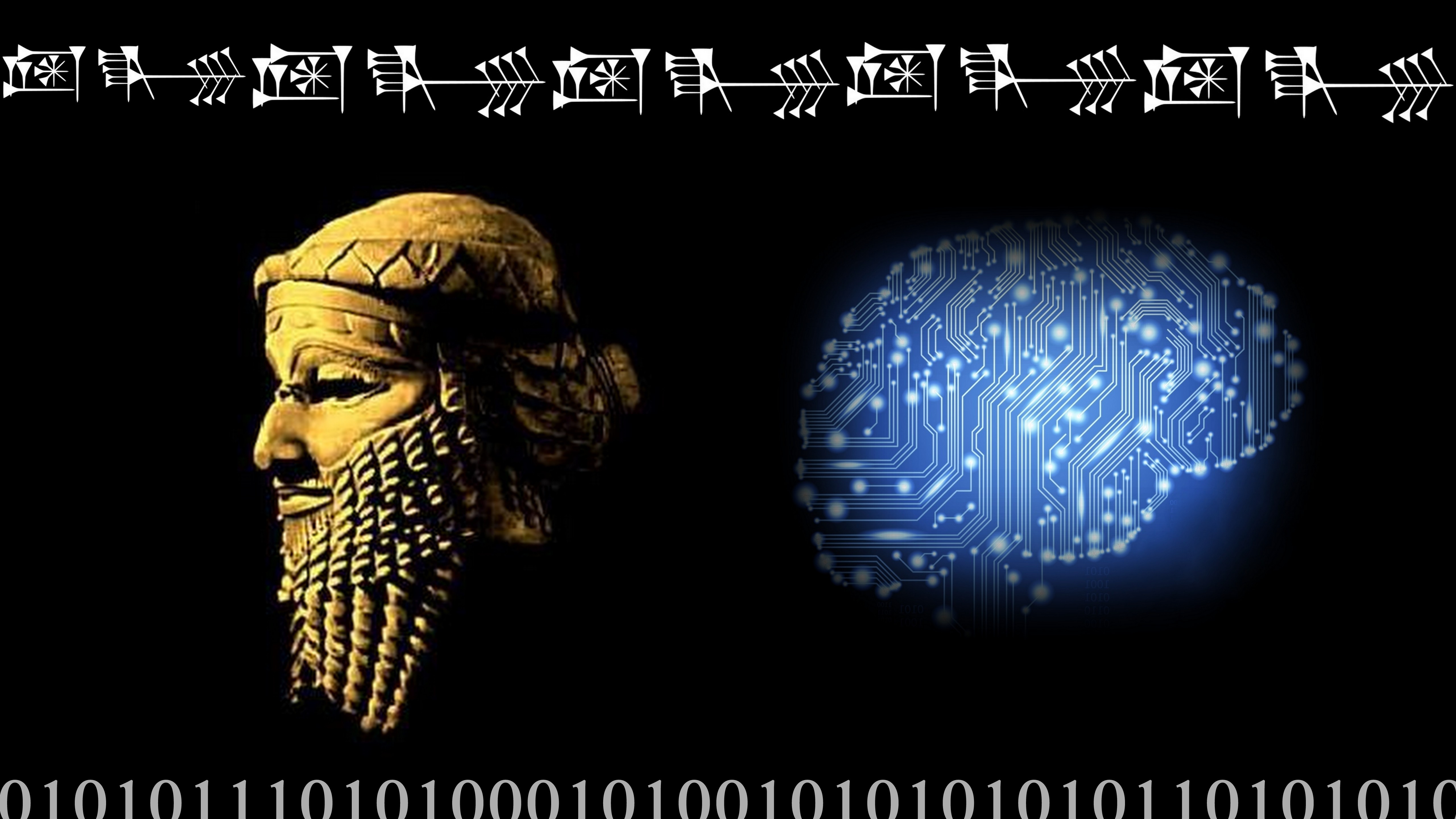
You are bound to come across countless examples, for we are at a crossroad with our technology, and at that crossroad is where the hero of the mythological journey must make a decision — continue to go down the same path where others have trodden to ruin, or blaze a new trail out of the darkness of the wood and into the illumination of light.
Read More: Why Tech Needs its Own Mythology Now More Than Ever
In the centuries to come, will Steve Jobs be remembered as a Buddha? Will Bill Gates be memorialized as a Centaur or Janus for his dual life of software and vaccines? Will Mark Cuban be likened to the great Mayan warriors who literally gave their lives to the ball game?
The tech community has all the motifs to write its own great mythology, and that mythology has something valuable to teach us all, even if its hubris leads us all to the brink of singularity.
Keep digging into the past in order to see the future.



